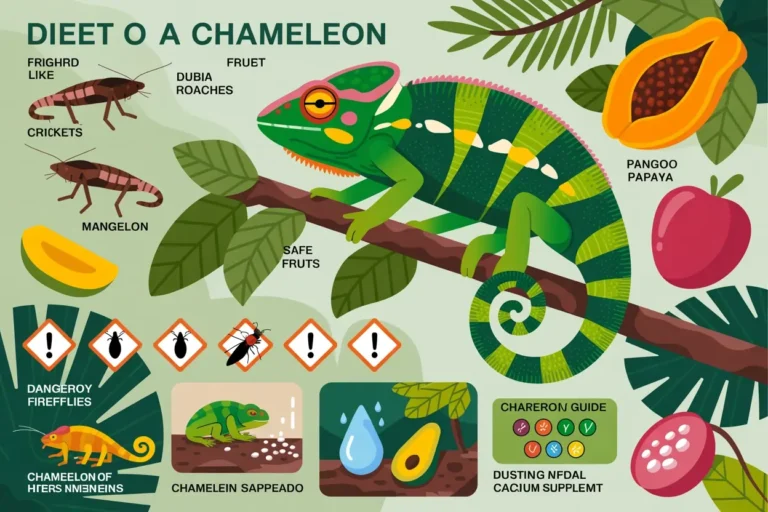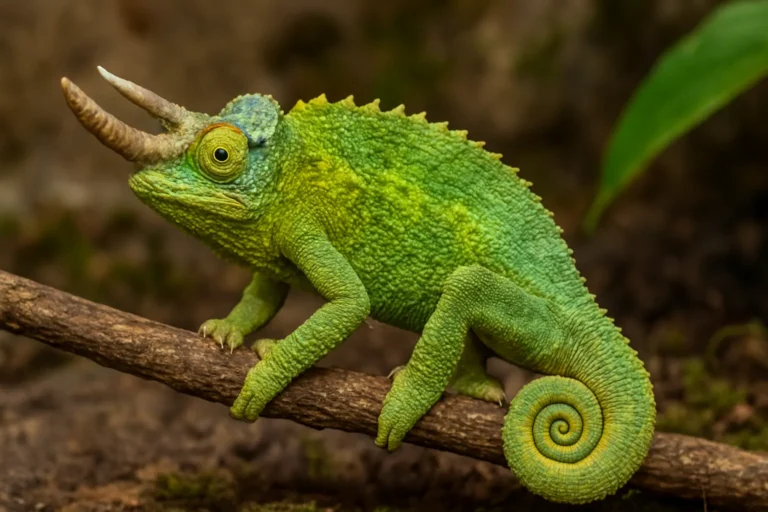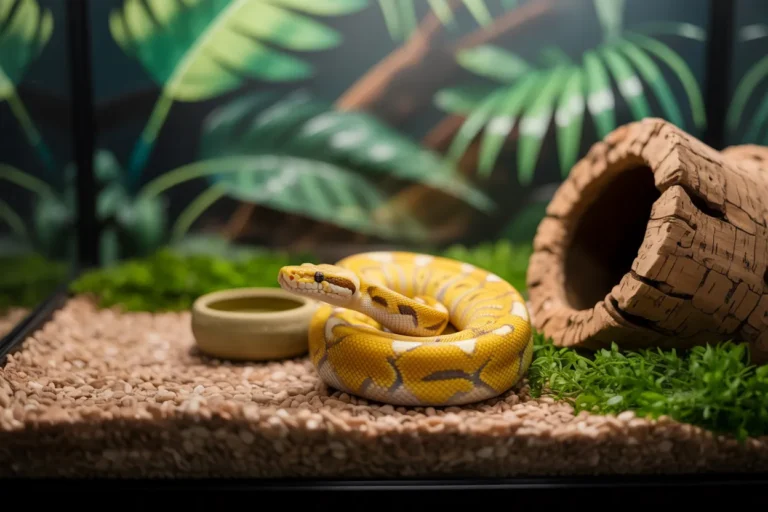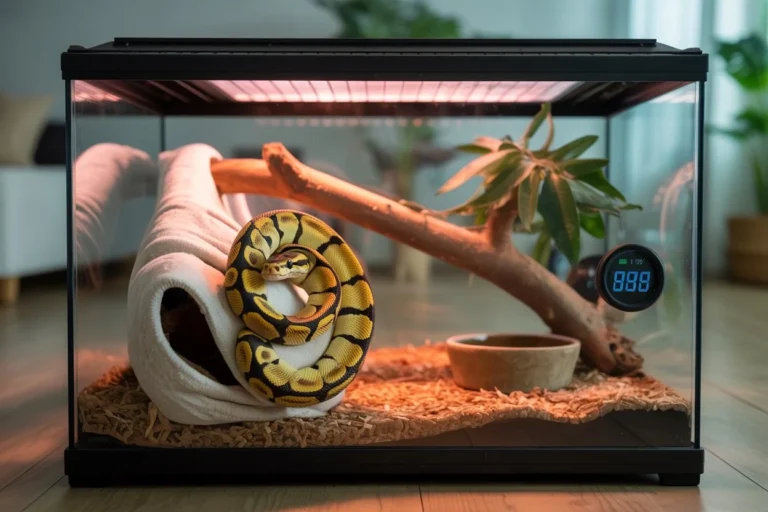Ball Python Lifespan: How Long Do They Live?
Ball pythons are among the most popular pet snakes in the world, known for their calm temperament, manageable size, and long lifespan. Whether you’re already a ball python owner or planning to bring one home, understanding their lifespan is key to providing them with the best possible care. With proper attention, these reptiles can be long-term companions, living for decades in captivity.
Average Ball Python Lifespan
In captivity, ball pythons can live for 20 to 30 years, with some even reaching beyond 30 when provided with optimal care. Their lifespan in the wild, however, is significantly shorter — averaging only 10 to 15 years due to various environmental threats.
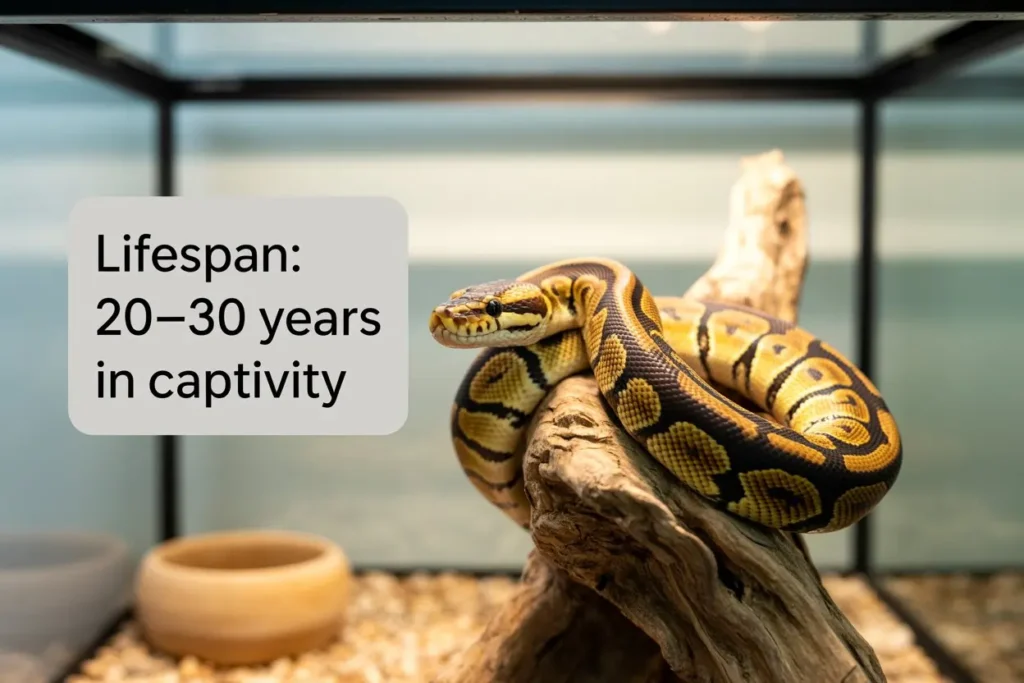
| Environment | Average Lifespan |
| Captivity (with care) | 20–30+ years |
| Wild (natural habitat) | 10–15 years |
What is the Lifespan of a Ball Python in the Wild?
Wild ball pythons face many challenges that limit their life expectancy:
- Predators: From the time they hatch, ball pythons are at risk from birds of prey, mammals, and even larger reptiles.
- Habitat Loss: Human encroachment leads to loss of habitat, making it harder for wild ball pythons to survive.
- Poaching & Pet Trade: In some regions, ball pythons are hunted or captured for the exotic pet trade.
- Lack of Veterinary Care: In the wild, there’s no treatment for injuries, diseases, or parasitic infections, which can shorten their lives.
Despite their instincts and adaptability, these external factors bring down the average lifespan of wild ball pythons.
Ball Python Life Expectancy in Captivity
With the right husbandry, ball pythons can thrive in captivity for decades. Here’s what contributes to their extended lifespan:
🛡️ Protection from Predators
Being kept in a secure environment protects captive ball pythons from natural predators, injuries, and environmental hazards.
🍽️ Consistent Nutrition
Captive snakes receive regular feeding schedules, eliminating the food scarcity they often face in the wild.
🩺 Access to Medical Care
Routine check-ups and timely treatment of illnesses significantly improve their health outcomes and longevity.
🐍 Predictable Conditions
Stable temperature, humidity, and a clean enclosure create ideal conditions for them to flourish.
Key Factors That Influence Ball Python Lifespan
Let’s break down the major elements that directly impact how long your ball python lives:
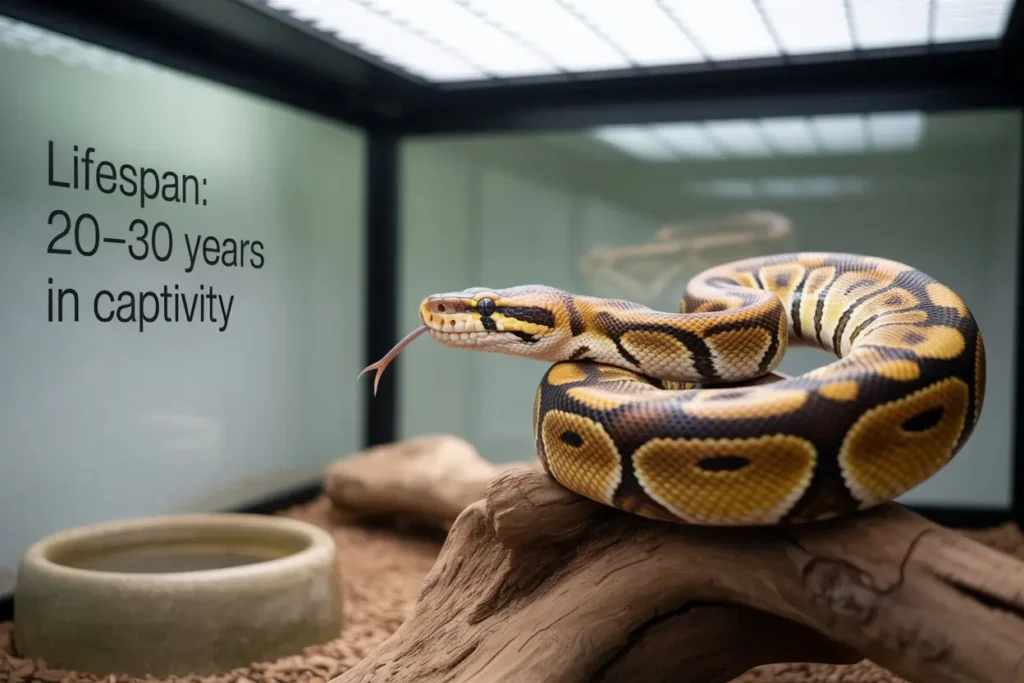
1. Genetics and Morphs
Ball pythons come in various morphs (color and pattern mutations), and some morphs are linked to specific genetic health concerns. For instance:
- Spider morphs are known to have neurological issues like “wobble.”
- Selective breeding can sometimes lead to weaker genetics.
Choosing a healthy morph from a reputable breeder and avoiding problematic genetic lines can significantly increase your pet’s lifespan.
2. Health and Veterinary Care
Routine health check-ups and good hygiene are essential for preventing common health issues like:
- Skin infections
- Respiratory disease
- Parasites (mites/ticks)
- Gastrointestinal problems
- Dysecdysis (stuck shed)
- Oral infections (stomatitis)
- Burns from heating elements
Regular vet visits help catch these issues early, making treatment more effective and preventing long-term complications.
3. Environment and Enclosure Setup
An appropriate environment is critical to a ball python’s health and longevity. Essential aspects include:
- Temperature gradient (75–92°F)
- Humidity control (50–60%, increased to ~70% during shedding)
- Spacious and secure enclosure with hiding spots
- Proper substrate that promotes cleanliness and comfort
A clean and stable habitat reduces stress and the risk of infections, helping your python thrive long-term.
4. Shedding & Skin Health
Healthy ball pythons should shed their skin in one complete piece. Frequent shedding in pieces or retained eye caps (spectacles) can indicate poor husbandry or illness.
Tips for Better Shedding:
- Maintain humidity at ~70% during shedding.
- Add a soaking bowl, sphagnum moss, or mist the enclosure with warm water.
- Never remove stuck eye caps manually — seek a vet’s help.
How to Prolong the Lifespan of Your Ball Python
Want your snake to hit the 30-year mark? Here’s how to make that happen:
1. Balanced Diet
Feed a variety of appropriately sized prey on a consistent schedule. Juveniles typically eat weekly, while adults eat every 1–2 weeks.
2. Ideal Habitat Conditions
Control temperature and humidity precisely. A stable environment supports digestion, immunity, and healthy shedding.
3. Preventative Vet Care
Schedule annual exams with a reptile-specialized vet. Early detection of illness can dramatically improve lifespan.
4. Enrichment & Handling
Provide environmental stimulation — climbing branches, hides, and occasional handling (outside of shedding periods) help reduce stress.
5. Clean Habitat
Regular cleaning of the enclosure, water dish, and removal of waste ensures a hygienic environment and reduces the risk of infections.
Final Thoughts
Ball pythons are a long-term commitment — with lifespans reaching up to three decades, they often outlive many other common pets. By understanding the factors that influence their lifespan and following best care practices, you can ensure your ball python not only lives longer but also enjoys a happy, healthy life. Proper care, veterinary guidance, and respect for their needs pave the way for a rewarding and enduring bond with your slithery friend.

